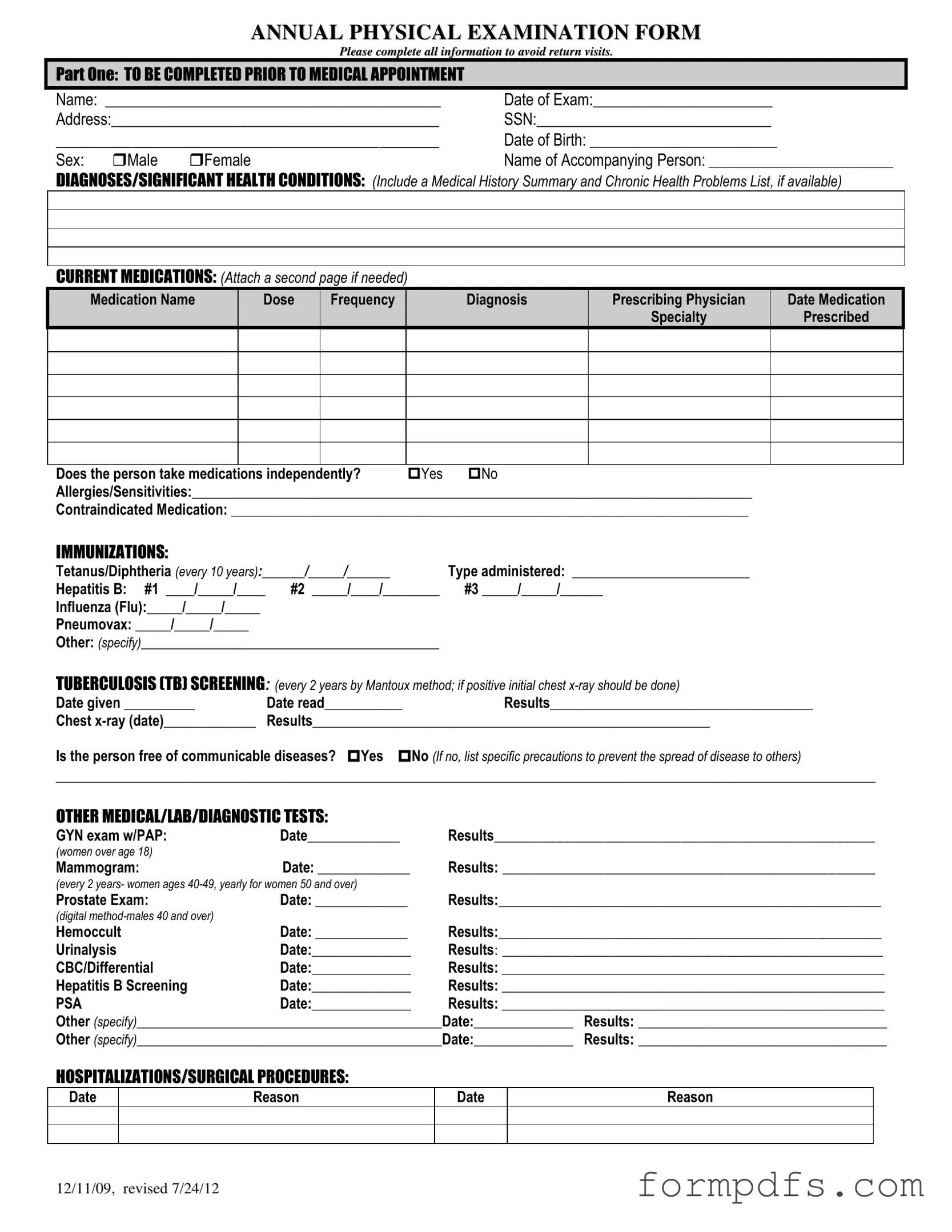The Annual Physical Examination form serves as a crucial tool in ensuring that individuals receive comprehensive health evaluations. This form encompasses a variety of essential sections that gather pertinent information prior to a medical appointment. It begins with personal details, including the patient's name, date of birth, and contact information, which are vital for accurate record-keeping. The form prompts individuals to disclose any significant health conditions, current medications, and allergies, allowing healthcare providers to tailor their assessments effectively. Immunization history is another key aspect, highlighting the importance of vaccinations like Tetanus, Hepatitis B, and Influenza. Additionally, it addresses tuberculosis screening and outlines necessary medical tests such as mammograms and prostate exams, which are critical for preventive care. The second part of the form focuses on the general physical examination, where vital signs and system evaluations are recorded, ensuring a thorough assessment of the patient’s overall health. By completing this form, patients not only facilitate their own healthcare experience but also contribute to a more effective and personalized approach to medical care.
